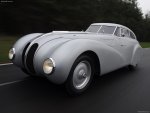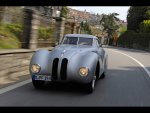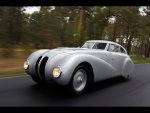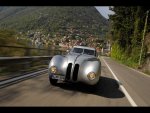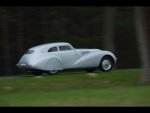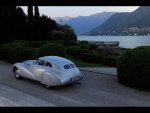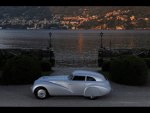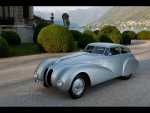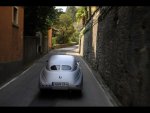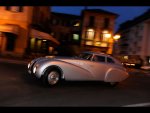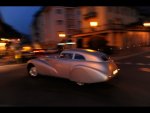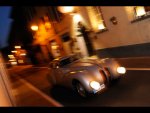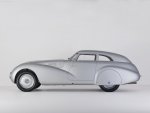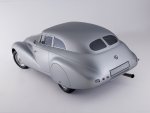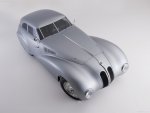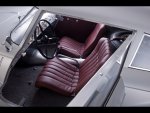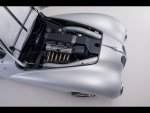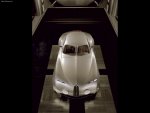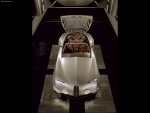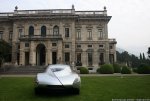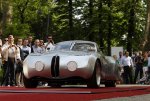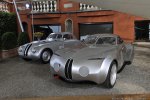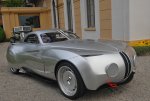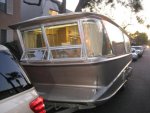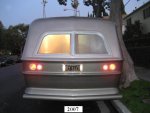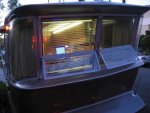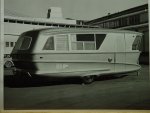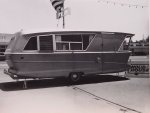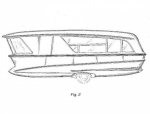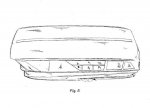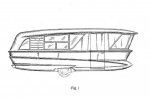You are using an out of date browser. It may not display this or other websites correctly.
You should upgrade or use an alternative browser.
You should upgrade or use an alternative browser.
TerraLiner:12 m Globally Mobile Beach House/Class-A Crossover w 6x6 Hybrid Drivetrain
- Thread starter biotect
- Start date
biotect
Designer
.
CONTINUED FROM PREVIOUS POST
*************************************************
Now imagine something similar to the original Kamm Coupé, but updated, synthesizing all that was great about the original with a more "contemporary sensibility.
To give you a very clear idea of what this might mean: even before BMW resurrected the Kamm Coupé in 2010, in 2006 they did a design "hommage" to the Kamm Coupé's cousin, the BMW 328 "Touring Coupé" that won the Mille Miglia road race in 1940. Although expressly declared a design hommage to the Touring Coupé, there are clear elements of the Kamm Coupé in the design, for instance, the very visible rear wheel arches:
[video=youtube;7fY1VvP2DyA]https://www.youtube.com/watch?v=7fY1VvP2DyA [/video]
[video=youtube;phhNsnZ_9xk]https://www.youtube.com/watch?v=phhNsnZ_9xk [/video]
[video=youtube;H-egy9sFYLU]https://www.youtube.com/watch?v=H-egy9sFYLU [/video]
See http://www.youtube.com/results?search_query=bmw+mille+miglia+hommage+2006 , http://www.motortrend.com/future/co...328_mille_miglia_touring_coupe/?__federated=1 , http://www.motortrend.com/future/co..._328_mille_miglia_touring_coupe/photo_01.html , http://www.bmwheaven.com/index.php/articles-and-reviews-mainmenu-3/bmw-news/84-190?start=4 , http://www.automobilsport.com/bmw-g...iley-triumpf-villa-d-este-events---11342.html , http://www.seriouswheels.com/cars/top-2006-BMW-Mille-Miglia-Concept.htm , http://www.netcarshow.com/bmw/2006-mille_miglia_coupe_concept/02.htm , http://www.supercars.net/cars/3492.html , http://www.supercars.net/Gallery?cmd=viewCarGallery&carID=3492&pgID=1 , and http://www.supercars.net/Pics?viewPic=y&source=carGal&carID=3492&pgID=1&pID=925668 .
And here are some images:
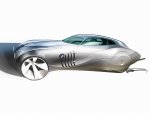

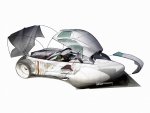
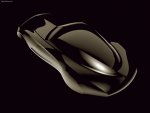
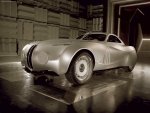
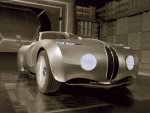
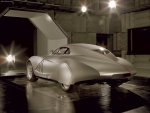
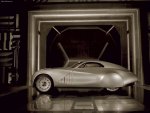

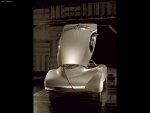
*************************************************
CONTINUED IN NEXT POST
.
CONTINUED FROM PREVIOUS POST
*************************************************
Now imagine something similar to the original Kamm Coupé, but updated, synthesizing all that was great about the original with a more "contemporary sensibility.
To give you a very clear idea of what this might mean: even before BMW resurrected the Kamm Coupé in 2010, in 2006 they did a design "hommage" to the Kamm Coupé's cousin, the BMW 328 "Touring Coupé" that won the Mille Miglia road race in 1940. Although expressly declared a design hommage to the Touring Coupé, there are clear elements of the Kamm Coupé in the design, for instance, the very visible rear wheel arches:
[video=youtube;7fY1VvP2DyA]https://www.youtube.com/watch?v=7fY1VvP2DyA [/video]
[video=youtube;phhNsnZ_9xk]https://www.youtube.com/watch?v=phhNsnZ_9xk [/video]
[video=youtube;H-egy9sFYLU]https://www.youtube.com/watch?v=H-egy9sFYLU [/video]
See http://www.youtube.com/results?search_query=bmw+mille+miglia+hommage+2006 , http://www.motortrend.com/future/co...328_mille_miglia_touring_coupe/?__federated=1 , http://www.motortrend.com/future/co..._328_mille_miglia_touring_coupe/photo_01.html , http://www.bmwheaven.com/index.php/articles-and-reviews-mainmenu-3/bmw-news/84-190?start=4 , http://www.automobilsport.com/bmw-g...iley-triumpf-villa-d-este-events---11342.html , http://www.seriouswheels.com/cars/top-2006-BMW-Mille-Miglia-Concept.htm , http://www.netcarshow.com/bmw/2006-mille_miglia_coupe_concept/02.htm , http://www.supercars.net/cars/3492.html , http://www.supercars.net/Gallery?cmd=viewCarGallery&carID=3492&pgID=1 , and http://www.supercars.net/Pics?viewPic=y&source=carGal&carID=3492&pgID=1&pID=925668 .
And here are some images:










*************************************************
CONTINUED IN NEXT POST
.
Last edited:
biotect
Designer
.
CONTINUED FROM PREVIOUS POST
*************************************************
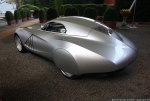
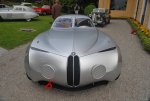
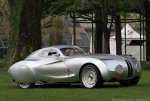
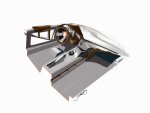
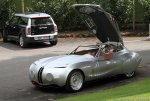
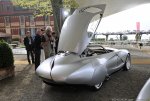
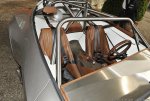

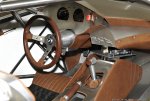
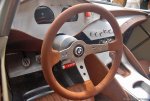
The body of this Touring Coupé hommage is completely constructed out of carbon fiber reinforced plastic (CFRP), but sprayed using a special silver gloss paint made using extremely fine pigment. The assymetrical stripe down the back is actually the rear brake light! The interior was constructed out of just three materials: untreated natural cowhide, Lycra fabric, and stainless steel. In their use of stainless steel the designers were inspired by Japanese origami paper-folding techniques, creating naturally folded surfaces in sheet metal, with a minimum of connections. The connections that remained necessary were joined with special laser technology.
The overall body shape was developed in a very traditional way, using a gradually refined plaster model, as opposed to CAD. This is possibly one of the reasons why car designers before the advent of computing were able to create more sculpturally convincing vehicles, vehicles with organic shapes and complex curves that interlocked and made sense. Because before computers, car designers were forced to work and think like sculptors.
If you've ever done sculpture, you quickly realize the importance of "haptic intelligence", the kind of intuitive spatial intelligence that develops as you learn how to control your hands and body in 3D, in relation to the form that you are adding to, or subtracting from -- see http://en.wikipedia.org/wiki/Haptic_perception . The development of "haptic" or "kinaesthetic" awareness of your own body in physical space is critical. It's not often realized that even good figurative drawing requires the same. When drawing figures from life, experienced artists will often themselves physically take the pose of the model they are drawing, in order to achieve a better "haptic" understaning of how the model's body is situated in space. But when working with CAD software on a computer, all that bodily spatial intelligence is thrown out the window, as well as all the emotional, intuitive intelligence that goes with it. Design becomes overly cerebral.
Using CAD one is also tempted to take lazy shortcuts, constructing forms out of the simplest geometric shapes, because those are so ready to hand in CAD programs like Alias or Maya. The instrument -- the computer -- begins to dictate the end product, in a way that proves questionable. Whereas when car designers had no choice but to work with full-scale clay and plaster mock-ups, they felt more free to create complex, interesting curves, and forms that have odd geometries.
Those deeply immersed in transportation design know all of this. A design and rapid-prototyping company like "Envisage", for instance, will have 3-D immersive "Virtual Reality" suites in which designers work in real time with their whole bodies, in relation to full-scale developing CAD concepts projected onto enormous screens -- see http://www.envisagegroupltd.com/design/visualisation . It's not quite clay modeling, but it's better than doing CAD on a flat screen. And yet, at the same time, even though Envisage has the most advanced CAD technology available, Envisage has not abandoned its clay-modeling studios -- see http://www.envisagegroupltd.com/models/clay , http://www.envisagegroupltd.com/models/styling , http://www.envisagegroupltd.com/models/ergonomic , http://www.envisagegroupltd.com/models/show , and http://www.envisagegroupltd.com/models/data-control . Also see http://www.envisagegroupltd.com/dre...-service-launched-top-marques-monaco-april-17 , http://www.envisagegroupltd.com/integrated-solutions/automotive , http://www.envisagegroupltd.com/limited-edition-design/cars , http://www.envisagegroupltd.com/limited-edition-design/bespoke-products , http://www.envisagegroupltd.com/speedback-gt/project-judi-modern-classic-car , http://www.envisagegroupltd.com/design/visualisation , http://www.envisagegroupltd.com/commercial-design/automotive , http://www.envisagegroupltd.com/studio-event-support/studio-support , http://www.envisagegroupltd.com/prototypes/prototypes , http://www.envisagegroupltd.com/vehicle-manufacturing/vehicle-manufacturing , and http://www.envisagegroupltd.com/special-vehicles-restoration/special-vehicles-replica-vehicles .
The car design community began realizing a while ago that something intuitively sculptural and emotionally convincing was missing from a great deal of automotive design done since the 1970s. So beginning in the 1990s, and really picking up speed after 2000, one car manufacturer after another began producing "hommage" cars, cars that play with the styling language of a previously successful, typically pre-1970's model. Wikipedia lists more than 30 such cars in its very brief article on "Retro-Style" automobiles -- see http://en.wikipedia.org/wiki/Retro-style_automobile . But most of these are production cars, and not one-offs like the BMW Miille Miglia 2006 concept car just illustrated. Indeed, the BMW Miille Miglia 2006 is not even on Wikipedia's list. Suggesting that if one-off "hommage" concept-car design exercises like the Mille Milglia 2006 were included, as well as prototypes that never see production, Wikipedia's list would be at least twice as long.
This kind of explicitly backwards-and-forwards-looking design methodology has a name: it's called "Retro-Futurism" -- see http://en.wikipedia.org/wiki/Retrofuturism , http://en.wikipedia.org/wiki/Retro-style_automobile , http://www.smashingmagazine.com/2009/06/08/retro-futurism-at-its-best-designs-and-tutorials/ , http://shop.webomator.com/retropolis.shtml , and http://www.darkroastedblend.com/2007/11/retro-future-to-stars.html :
Next, imagine a similar design process for an expedition motorhome: a design that synthesizes all that was good about Art Deco, all that was inspiring about 1930's and 1940's design, combined with a "contemporary" sensibility.
Except that the major design precedents for a motorhome will be vehicles like the earliest versions of the VW Microbus, or vintage Airstream, Bowlus, and Spartan trailers.......
*************************************************
CONTINUED IN NEXT POST
.
CONTINUED FROM PREVIOUS POST
*************************************************










The body of this Touring Coupé hommage is completely constructed out of carbon fiber reinforced plastic (CFRP), but sprayed using a special silver gloss paint made using extremely fine pigment. The assymetrical stripe down the back is actually the rear brake light! The interior was constructed out of just three materials: untreated natural cowhide, Lycra fabric, and stainless steel. In their use of stainless steel the designers were inspired by Japanese origami paper-folding techniques, creating naturally folded surfaces in sheet metal, with a minimum of connections. The connections that remained necessary were joined with special laser technology.
The overall body shape was developed in a very traditional way, using a gradually refined plaster model, as opposed to CAD. This is possibly one of the reasons why car designers before the advent of computing were able to create more sculpturally convincing vehicles, vehicles with organic shapes and complex curves that interlocked and made sense. Because before computers, car designers were forced to work and think like sculptors.
If you've ever done sculpture, you quickly realize the importance of "haptic intelligence", the kind of intuitive spatial intelligence that develops as you learn how to control your hands and body in 3D, in relation to the form that you are adding to, or subtracting from -- see http://en.wikipedia.org/wiki/Haptic_perception . The development of "haptic" or "kinaesthetic" awareness of your own body in physical space is critical. It's not often realized that even good figurative drawing requires the same. When drawing figures from life, experienced artists will often themselves physically take the pose of the model they are drawing, in order to achieve a better "haptic" understaning of how the model's body is situated in space. But when working with CAD software on a computer, all that bodily spatial intelligence is thrown out the window, as well as all the emotional, intuitive intelligence that goes with it. Design becomes overly cerebral.
Using CAD one is also tempted to take lazy shortcuts, constructing forms out of the simplest geometric shapes, because those are so ready to hand in CAD programs like Alias or Maya. The instrument -- the computer -- begins to dictate the end product, in a way that proves questionable. Whereas when car designers had no choice but to work with full-scale clay and plaster mock-ups, they felt more free to create complex, interesting curves, and forms that have odd geometries.
Those deeply immersed in transportation design know all of this. A design and rapid-prototyping company like "Envisage", for instance, will have 3-D immersive "Virtual Reality" suites in which designers work in real time with their whole bodies, in relation to full-scale developing CAD concepts projected onto enormous screens -- see http://www.envisagegroupltd.com/design/visualisation . It's not quite clay modeling, but it's better than doing CAD on a flat screen. And yet, at the same time, even though Envisage has the most advanced CAD technology available, Envisage has not abandoned its clay-modeling studios -- see http://www.envisagegroupltd.com/models/clay , http://www.envisagegroupltd.com/models/styling , http://www.envisagegroupltd.com/models/ergonomic , http://www.envisagegroupltd.com/models/show , and http://www.envisagegroupltd.com/models/data-control . Also see http://www.envisagegroupltd.com/dre...-service-launched-top-marques-monaco-april-17 , http://www.envisagegroupltd.com/integrated-solutions/automotive , http://www.envisagegroupltd.com/limited-edition-design/cars , http://www.envisagegroupltd.com/limited-edition-design/bespoke-products , http://www.envisagegroupltd.com/speedback-gt/project-judi-modern-classic-car , http://www.envisagegroupltd.com/design/visualisation , http://www.envisagegroupltd.com/commercial-design/automotive , http://www.envisagegroupltd.com/studio-event-support/studio-support , http://www.envisagegroupltd.com/prototypes/prototypes , http://www.envisagegroupltd.com/vehicle-manufacturing/vehicle-manufacturing , and http://www.envisagegroupltd.com/special-vehicles-restoration/special-vehicles-replica-vehicles .
The car design community began realizing a while ago that something intuitively sculptural and emotionally convincing was missing from a great deal of automotive design done since the 1970s. So beginning in the 1990s, and really picking up speed after 2000, one car manufacturer after another began producing "hommage" cars, cars that play with the styling language of a previously successful, typically pre-1970's model. Wikipedia lists more than 30 such cars in its very brief article on "Retro-Style" automobiles -- see http://en.wikipedia.org/wiki/Retro-style_automobile . But most of these are production cars, and not one-offs like the BMW Miille Miglia 2006 concept car just illustrated. Indeed, the BMW Miille Miglia 2006 is not even on Wikipedia's list. Suggesting that if one-off "hommage" concept-car design exercises like the Mille Milglia 2006 were included, as well as prototypes that never see production, Wikipedia's list would be at least twice as long.
This kind of explicitly backwards-and-forwards-looking design methodology has a name: it's called "Retro-Futurism" -- see http://en.wikipedia.org/wiki/Retrofuturism , http://en.wikipedia.org/wiki/Retro-style_automobile , http://www.smashingmagazine.com/2009/06/08/retro-futurism-at-its-best-designs-and-tutorials/ , http://shop.webomator.com/retropolis.shtml , and http://www.darkroastedblend.com/2007/11/retro-future-to-stars.html :
Retrofuturism (adjective retrofuturistic or retrofuture) is a trend in the creative arts showing the influence of depictions of the future produced in an earlier era. Characterized by a blend of old-fashioned "retro" styles with futuristic technology, retro-futurism explores the themes of tension between past and future, and between the alienating and empowering effects of technology. Primarily reflected in artistic creations and modified technologies that realize the imagined artifacts of its parallel reality, retrofuturism has also manifested in the worlds of fashion, architecture, design, music, literature, film, and video games.
Next, imagine a similar design process for an expedition motorhome: a design that synthesizes all that was good about Art Deco, all that was inspiring about 1930's and 1940's design, combined with a "contemporary" sensibility.
Except that the major design precedents for a motorhome will be vehicles like the earliest versions of the VW Microbus, or vintage Airstream, Bowlus, and Spartan trailers.......
*************************************************
CONTINUED IN NEXT POST
.
Last edited:
biotect
Designer
.
CONTINUED FROM PREVIOUS POST
*************************************************
I am a big fan of vintage trailers, both interiors and exteriors. One of my favorites is the Holiday House Model X Camper, a prototype built in California that dates back to 1960. In its time it was considered the height of luxury and advanced design. For instance, it was listed for sale in 1960 for $8495, at a time when the average house cost $13,000. Only five were made, only one still exists, and it is considered perhaps the very first all-fiberglass trailer ever built:
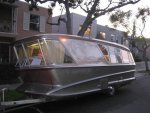
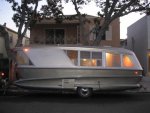


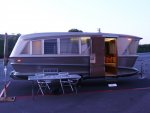

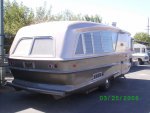
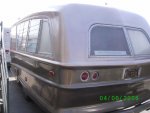

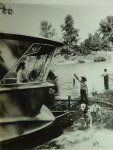
*************************************************
CONTINUED IN NEXT POST
.
CONTINUED FROM PREVIOUS POST
*************************************************
I am a big fan of vintage trailers, both interiors and exteriors. One of my favorites is the Holiday House Model X Camper, a prototype built in California that dates back to 1960. In its time it was considered the height of luxury and advanced design. For instance, it was listed for sale in 1960 for $8495, at a time when the average house cost $13,000. Only five were made, only one still exists, and it is considered perhaps the very first all-fiberglass trailer ever built:










*************************************************
CONTINUED IN NEXT POST
.
Last edited:
biotect
Designer
.
CONTINUED FROM PREVIOUS POST
*************************************************
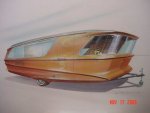
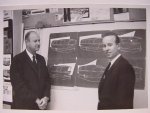

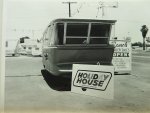

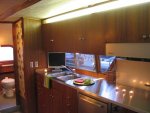
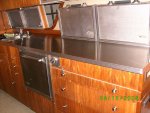
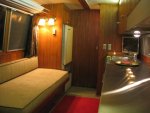


See http://www.mailtribune.com/apps/pbcs.dll/article?AID=/20070724/NEWS/707240320 , http://articles.latimes.com/2006/oct/12/home/hm-trailer12 , http://realmod.blogspot.com/2012/01/holiday-house-model-x-geographic.html , https://www.facebook.com/media/set/?set=a.160791124057546.37285.154594534677205&type=1 , http://www.trailerfixer.com/newly-added-restorations.html , http://www.trailerfixer.com/newly-added-restorations.html , http://www.motorhomeroadtrip.com/blogs/campervan-rental/innovative-design-1960-travel-trailer/ , http://1964shastalouise.blogspot.com/2010_02_01_archive.html , http://atomicaddiction.blogspot.com/2009/06/best-travel-trailer-ever.html , http://www.bloglovin.com/viewer?pos...me_type=a&blog=3425206&frame=1&click=0&user=0 , http://www.fiberglassrv.com/forums/groups/24-geographic+trailers.html , http://www.fiberglassrv.com/forums/f51/geographic-26-restoration-25736.html , http://www.fiberglassrv.com/forums/f51/that-1960s-geographic-trailer-again-27041.html , http://www.fiberglassrv.com/forums/f51/rare-and-unusual-trailer-27367-3.html , http://www.fiberglassrv.com/forums/f51/the-1960-geographic-trailer-27538.html , http://www.fiberglassrv.com/forums/f80/geographic-model-x-41309.html , http://www.fiberglassrv.com/forums/...0-holiday-house-model-x-geographic-44523.html , and http://www.fiberglassrv.com/forums/f51/wild-60s-fiberglass-trailer-24633.html .
There was once a good website that contained a wealth of information about the trailer, created by the designer who found and restored the one remaining extant example. He's the guy looking out of the trailer in one of the photographs above. But he has since sold the trailer to a buyer who had it shipped to France. And so perhaps for that reason the great website no longer exists.
Note that I don't particularly like the interior of this trailer, only the exterior. But thought I should include a few images of the interior just the same.
It's interesting how the design of the exterior has aged well. It looks almost as futuristic today as it must have looked in 1960. The best design is like that. Paradoxically, it seems timeless as well as perennially contemporary. In the world of motorhomes, Airstream would be an excellent example. The basic form of the Airstream trailer has remained virtually unchanged for more than 50 years. And yet with their bright shiny aluminum exteriors and curvilinear shapes, Airstream trailers continue to look more "futuristic" today than many contemporary motorhomes. See http://en.wikipedia.org/wiki/Airstream and http://www.airstream.com . Whereas the designs we tend to consign to the scrap-heap, are designs that in retrospect can be very easily dated.
In any case, you get the picture, campo. Not "design straight lines with rounded edges". But exactly the opposite. Organic, biomorphic, curvilinear, rotund, Art-Deco, retro-futuristic design, pushed as far as it can go.....:sombrero:
*************************************************
CONTINUED IN NEXT POST
.
CONTINUED FROM PREVIOUS POST
*************************************************










See http://www.mailtribune.com/apps/pbcs.dll/article?AID=/20070724/NEWS/707240320 , http://articles.latimes.com/2006/oct/12/home/hm-trailer12 , http://realmod.blogspot.com/2012/01/holiday-house-model-x-geographic.html , https://www.facebook.com/media/set/?set=a.160791124057546.37285.154594534677205&type=1 , http://www.trailerfixer.com/newly-added-restorations.html , http://www.trailerfixer.com/newly-added-restorations.html , http://www.motorhomeroadtrip.com/blogs/campervan-rental/innovative-design-1960-travel-trailer/ , http://1964shastalouise.blogspot.com/2010_02_01_archive.html , http://atomicaddiction.blogspot.com/2009/06/best-travel-trailer-ever.html , http://www.bloglovin.com/viewer?pos...me_type=a&blog=3425206&frame=1&click=0&user=0 , http://www.fiberglassrv.com/forums/groups/24-geographic+trailers.html , http://www.fiberglassrv.com/forums/f51/geographic-26-restoration-25736.html , http://www.fiberglassrv.com/forums/f51/that-1960s-geographic-trailer-again-27041.html , http://www.fiberglassrv.com/forums/f51/rare-and-unusual-trailer-27367-3.html , http://www.fiberglassrv.com/forums/f51/the-1960-geographic-trailer-27538.html , http://www.fiberglassrv.com/forums/f80/geographic-model-x-41309.html , http://www.fiberglassrv.com/forums/...0-holiday-house-model-x-geographic-44523.html , and http://www.fiberglassrv.com/forums/f51/wild-60s-fiberglass-trailer-24633.html .
There was once a good website that contained a wealth of information about the trailer, created by the designer who found and restored the one remaining extant example. He's the guy looking out of the trailer in one of the photographs above. But he has since sold the trailer to a buyer who had it shipped to France. And so perhaps for that reason the great website no longer exists.
Note that I don't particularly like the interior of this trailer, only the exterior. But thought I should include a few images of the interior just the same.
It's interesting how the design of the exterior has aged well. It looks almost as futuristic today as it must have looked in 1960. The best design is like that. Paradoxically, it seems timeless as well as perennially contemporary. In the world of motorhomes, Airstream would be an excellent example. The basic form of the Airstream trailer has remained virtually unchanged for more than 50 years. And yet with their bright shiny aluminum exteriors and curvilinear shapes, Airstream trailers continue to look more "futuristic" today than many contemporary motorhomes. See http://en.wikipedia.org/wiki/Airstream and http://www.airstream.com . Whereas the designs we tend to consign to the scrap-heap, are designs that in retrospect can be very easily dated.
In any case, you get the picture, campo. Not "design straight lines with rounded edges". But exactly the opposite. Organic, biomorphic, curvilinear, rotund, Art-Deco, retro-futuristic design, pushed as far as it can go.....:sombrero:
*************************************************
CONTINUED IN NEXT POST
.
Last edited:
biotect
Designer
...
CONTINUED FROM PREVIOUS POST
*************************************************
22. Ethically Sound?
*************************************************
If only the process were so linear!!! Actually, for me some of the most basic concerns have been social, ethical, economic, and demographic. What I am basically imagining is a "Concorde Liner" or a "Newell Class-A motorhome" that can take well-off retired couples not just around the United States and Europe, but all over the world, in comfort and style. A "Global Glamper" if you will. Hey, I just thought of that!! And it really does fit: a globally capable expedition motorhome for glamorous camping.
But before I went much further with it, I first had to satisfy myself that the thing would be ethical. I think it would be ethical, because as a 3-axle 6x6, this vehicle would not be designed to travel mud-tracks in Fourth-World countries like the Congo. And that would be a good thing, not a bad thing. If it can't go there, then it won't create bad karma by driving through extreme Fourth-World poverty, flaunting itself as an expensive piece of First-World kit. Conversely, a 3-axle 6x6 would be perfectly capable of traveling through Second-World countries like China that have good roads, countries where its high-end "glamping" aesthetic would not be an ethical affront to the locals.
Put succinctly: Where a 3-axle 6x6 can go physically, it will probably also be OK for it to go karmically.
Creating the "Ethics of Third World Travel By Motorhome" thread helped to clarify my thinking tremendously here -- see http://www.expeditionportal.com/for...highlight=ethics+third+world+travel+motorhome . As some of the more perceptive types in that thread remarked, the idea of any First-World motorhome traveling through a Third World country being "more ethical" than any other, is simply absurd. Whether you are driving a 6x6, a 4x4, an SUV, or a motorbike, the bottom line is that you are a privileged citizen of a First-World country who probably earns more in a week, than 95 % of the local population earns on average in a year. Pretending to "slum it" and "go native" by motorbike camping is misplaced hippie nonsense. But driving through a Second-World country with good roads, in a big, 9.5 m 6x6, is not that ethically different from driving through the United States in a 45-foot long, 13.74 m Newell Coach.
I suppose all of this is captured by number 1 on your list, "overall idea and choice". That seems covered, so now the nitty-gritty work and real fun begins.....:wings:
*************************************************
23. Summary
*************************************************
So the concept vehicle being discussed here will be:
So campo, many thanks for your message!! It had a good structure, and encouraged me to think in a very systematic, point-form way about some of the more important specifications of this concept vehicle.
All best wishes,
Biotect
CONTINUED FROM PREVIOUS POST
*************************************************
22. Ethically Sound?
*************************************************
Design planning:
1. Overall idea and choice
2. Weight repartition and axle position
3. Hybrid propulsion components position
4. Monocoque design and suspension
5. Garage position and doors
6. Position of tanks, batteries and techniques
7. Interior layout
8. Exterior design
Regards Campo
If only the process were so linear!!! Actually, for me some of the most basic concerns have been social, ethical, economic, and demographic. What I am basically imagining is a "Concorde Liner" or a "Newell Class-A motorhome" that can take well-off retired couples not just around the United States and Europe, but all over the world, in comfort and style. A "Global Glamper" if you will. Hey, I just thought of that!! And it really does fit: a globally capable expedition motorhome for glamorous camping.
But before I went much further with it, I first had to satisfy myself that the thing would be ethical. I think it would be ethical, because as a 3-axle 6x6, this vehicle would not be designed to travel mud-tracks in Fourth-World countries like the Congo. And that would be a good thing, not a bad thing. If it can't go there, then it won't create bad karma by driving through extreme Fourth-World poverty, flaunting itself as an expensive piece of First-World kit. Conversely, a 3-axle 6x6 would be perfectly capable of traveling through Second-World countries like China that have good roads, countries where its high-end "glamping" aesthetic would not be an ethical affront to the locals.
Put succinctly: Where a 3-axle 6x6 can go physically, it will probably also be OK for it to go karmically.
Creating the "Ethics of Third World Travel By Motorhome" thread helped to clarify my thinking tremendously here -- see http://www.expeditionportal.com/for...highlight=ethics+third+world+travel+motorhome . As some of the more perceptive types in that thread remarked, the idea of any First-World motorhome traveling through a Third World country being "more ethical" than any other, is simply absurd. Whether you are driving a 6x6, a 4x4, an SUV, or a motorbike, the bottom line is that you are a privileged citizen of a First-World country who probably earns more in a week, than 95 % of the local population earns on average in a year. Pretending to "slum it" and "go native" by motorbike camping is misplaced hippie nonsense. But driving through a Second-World country with good roads, in a big, 9.5 m 6x6, is not that ethically different from driving through the United States in a 45-foot long, 13.74 m Newell Coach.
I suppose all of this is captured by number 1 on your list, "overall idea and choice". That seems covered, so now the nitty-gritty work and real fun begins.....:wings:
*************************************************
23. Summary
*************************************************
So the concept vehicle being discussed here will be:
- a fully integrated, German "Liner" style motorhome
- with 3 axles, and 6x6 all-wheel drive
- front and rear wheel steering
- constructed either on MAN SX-44 or Tatra 815 "Phoenix" torsion-free chassis
- engineering innovative, not engineering futuristic
- intended for a 2017/2018 release date
- designed with a view to "technology available now", but also "technology not yet proven" in an expedition motorhome application
- intended for a well-off, recently retired couple, and used for full-time overlanding around the world
- but with convertible seating and a pull-down bed, so that it could sleep 4 adults on a temporary basis
- 9.5 m long, 2.5 m wide, 3.95 m high
- equipped with an off-road capable, military grade, serial-hybrid power train
- with either a diesel engine, or a microturbine, driving a range-exttending electrical generator; still to be determined
- multi-fuel capable
- full serial hybrid, and not parallel hybrid
- possibly equipped with two generators, for redundancy
- top speed 140 km/h
- normal driving speed 100 km/h
- tires to be determined, depending on application; tire size either 14.00 R20 or 16.00 R20
- equipped with CTIS, tire-protection shields, and possibly tire-protection chains (as recommended by egn)
- ideally below 16 tons, fully loaded; but torsion-free chassis is an absolute minimum requirement
- equipped with a very large battery pack; either lithium-ion or ultra-capacitors, still to be determined
- capable of traveling comfortably through a -50°C to +50°C climate range
- and a 5500 m altitude range
- covered in lots of very big, thermally advanced windows
- constructed out of walls 6 cm thick; roof and floor thickness still to be determined
- maximally covered with solar panels
- possibly equipped with slide-out for lounge area
- and a full-length UniCat type pop-up
- no garage in back.
- equipped with a fold-down deck at the rear of the vehicle instead
- a fold-down rear deck accessed by sliding glass doors, that run across the full width of the back of the vehicle
- a fold-down rear deck that lowers with a "cantilever" type hydraulic tail-lift mechism
- equipped with a motorcycle, stowed along with spare tires, in a "column" type hydraulic tail-lift at the back of the vehicle
- and a small SUV runabout towed behind the vehicle, as per Petert Thompson's Mañana
- not air-transportable; a vehicle for sojourning, not racking up overlanding miles
- designed with lots of curves, in a "Retro-futuristic" style reminiscent of the 1930's and 1940's
- designed so that it looks visually endearing, non-threatening, and lovable, as per the VW "Kombi" Microbus
- but also designed with beauty, grace, and elegance in mind
So campo, many thanks for your message!! It had a good structure, and encouraged me to think in a very systematic, point-form way about some of the more important specifications of this concept vehicle.
All best wishes,
Biotect
Last edited:
Haf-E
Expedition Leader
Re: Battery Pack: Lithium-Ion, or Ultra-Capacitors?
The technology of ultra-capacitors and lithium-ion batteries are converging - at some point the difference will be hard to say... but basically a capacitor is good for extremely high currents that are very frequent (i.e. lots of high powerer charge/discharge cycles) versus the LI battery being better for longer duration discharges that are less frequent.
The latest newest variant of LI batteries is now claiming 10,000 cycles at 80% depth of discharge - so the advantage of ultra-capacitors is less significant.
Ultra-capacitors are typically used in hybrid vehicles where the IC engine operates nearly all the time that the vehicle is moving - they provide acceleration and allow short term storage of recovered energy when braking. Batteries are used when the vehicle needs to operate without the IC engine operating for significant periods of time.
The technology of ultra-capacitors and lithium-ion batteries are converging - at some point the difference will be hard to say... but basically a capacitor is good for extremely high currents that are very frequent (i.e. lots of high powerer charge/discharge cycles) versus the LI battery being better for longer duration discharges that are less frequent.
The latest newest variant of LI batteries is now claiming 10,000 cycles at 80% depth of discharge - so the advantage of ultra-capacitors is less significant.
Ultra-capacitors are typically used in hybrid vehicles where the IC engine operates nearly all the time that the vehicle is moving - they provide acceleration and allow short term storage of recovered energy when braking. Batteries are used when the vehicle needs to operate without the IC engine operating for significant periods of time.
dwh
Tail-End Charlie
- constructed out of walls 6 m thick;
That should certainly be arctic capable.
I had an idea some years ago for windows. Use double-pane windows, but inset them. Then construct "storm shutters".
Take two pieces of of 1/4" Lexan with a 1/4" piece of o-ring material between them to create a gap. Put limo-tint film on the inside of the outer later. Screw them together to make a single unit. Attach them at the top with piano hinges, and use a lock/crank setup from a typical casement window:

So you now have (almost literally bullet-proof) storm shutters which turn your double-pane into quadruple-pane when closed (and make the truck bloody secure when closed and locked), but when open become shaded awnings for the windows.
Haf-E
Expedition Leader
Starting to sound like a "Decoliner"
Surprised you haven't mentioned Randy Grubb's "Decoliner"
http://www.randygrubb.com/the-decoliner/

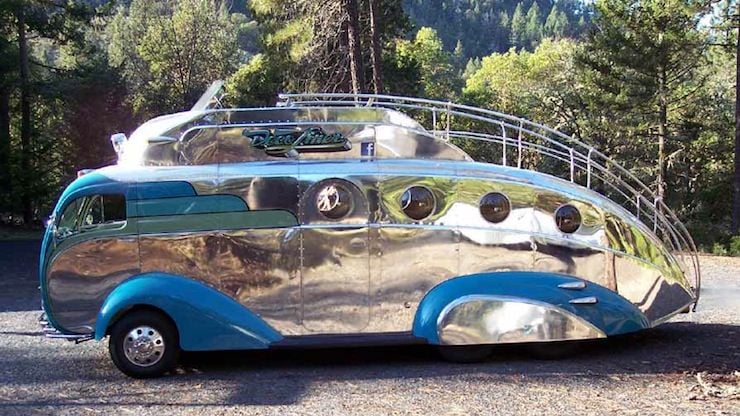
Surprised you haven't mentioned Randy Grubb's "Decoliner"
http://www.randygrubb.com/the-decoliner/


Last edited:
biotect
Designer
Hi Haf-E,
If you recall, I sang an ode to the joys of the DecoLiner's "Flying Bridge" driving position earlier in the thread -- see post #171, at http://www.expeditionportal.com/for...pedition-RV-w-Rigid-Torsion-Free-Frame/page18 .
I really love the DecoLiner's overall Art Deco "aesthetic". But it does not seem very practical as a motorhome for full-time living. And although the DecoLiner is most definitely lovable, and packs as much soul and personality as a VW Kombi, I am not sure whether one could describe it as "elegant". The challenge is to create a vehicle that seems simultaneously both masculine and feminine (or perhaps even, androgynous?); that seems unthreatening, endearing, and at some level "lovable", just like the Kombi or the DecoLiner; but that also seems very elegant and sophisticated. All in one go.
In sports cars one of the most successful and iconic examples would be the Jaguar E-Type, designed by Malcom Sayer in the late 1950's:
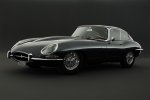
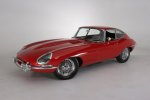
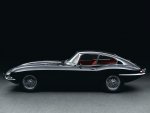


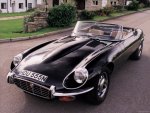


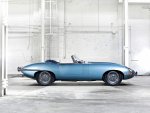

Amongst automobile enthusiasts, and not just British ones, the E-Type is often described as "the most beautiful car of all time". When the Daily Telegraph ran a poll to that effect, the E-Type received 4 times as many votes as any other car -- see http://www.telegraph.co.uk/motoring/2751222/The-100-most-beautiful-cars-20-1.html?image=19 . Even in rankings that are open to rare super-limited-production wonders like the Alfa Romeo 33 Stradale or the Ferrari 330 P4, the E-Type still makes it into the Top 5, only possibly beaten by Ferrari 250 GTO -- see http://www.popularmechanics.com/cars/news/fuel-economy/the-100-hottest-cars-of-all-time#slide-100 and http://www.popularmechanics.com/cars/news/fuel-economy/the-100-hottest-cars-of-all-time#slide-96 .
It's then interesting to ask ourselves why. Why is the E-Type the most beautiful car of all time? It's certainly not the most "muscular" or "macho" car of all time. An American muscle-car circa 1967 to 1970 would win hands down if "most muscular-looking car of all time" were the criterion -- see http://www.bankrate.com/finance/auto/best-american-muscle-cars-of-all-time-4.aspx . As Jay Leno once remarked, the E-type is not overtly masculine. But the E-type is still convincing enough as a sports car, and so self-evidently fast and powerful, that no guy would ever be embarrassed to be seen driving it. And yet the E-Type also strongly appeals to women. The flowing curves of the E-type partly explain its universal appeal. But as the Decoliner suggests, flowing curves alone do not necessarily add up to elegance.
For more about the E-Type, see http://en.wikipedia.org/wiki/Jaguar_E-Type , http://en.wikipedia.org/wiki/Malcolm_Sayer ,http://www.bbc.com/news/magazine-22729452 , http://www.bbc.co.uk/programmes/b021463z , http://bestautomobileblog.com/jaguar-e-type/ , and http://www.jdclassics.co.uk/showrooms/Jaguar-E-Type-for-Sale.htm .
The challenge, it seems to me, is to create something similarly evocative in an expedition motorhome.
All best wishes,
Biotect
If you recall, I sang an ode to the joys of the DecoLiner's "Flying Bridge" driving position earlier in the thread -- see post #171, at http://www.expeditionportal.com/for...pedition-RV-w-Rigid-Torsion-Free-Frame/page18 .
I really love the DecoLiner's overall Art Deco "aesthetic". But it does not seem very practical as a motorhome for full-time living. And although the DecoLiner is most definitely lovable, and packs as much soul and personality as a VW Kombi, I am not sure whether one could describe it as "elegant". The challenge is to create a vehicle that seems simultaneously both masculine and feminine (or perhaps even, androgynous?); that seems unthreatening, endearing, and at some level "lovable", just like the Kombi or the DecoLiner; but that also seems very elegant and sophisticated. All in one go.
In sports cars one of the most successful and iconic examples would be the Jaguar E-Type, designed by Malcom Sayer in the late 1950's:










Amongst automobile enthusiasts, and not just British ones, the E-Type is often described as "the most beautiful car of all time". When the Daily Telegraph ran a poll to that effect, the E-Type received 4 times as many votes as any other car -- see http://www.telegraph.co.uk/motoring/2751222/The-100-most-beautiful-cars-20-1.html?image=19 . Even in rankings that are open to rare super-limited-production wonders like the Alfa Romeo 33 Stradale or the Ferrari 330 P4, the E-Type still makes it into the Top 5, only possibly beaten by Ferrari 250 GTO -- see http://www.popularmechanics.com/cars/news/fuel-economy/the-100-hottest-cars-of-all-time#slide-100 and http://www.popularmechanics.com/cars/news/fuel-economy/the-100-hottest-cars-of-all-time#slide-96 .
It's then interesting to ask ourselves why. Why is the E-Type the most beautiful car of all time? It's certainly not the most "muscular" or "macho" car of all time. An American muscle-car circa 1967 to 1970 would win hands down if "most muscular-looking car of all time" were the criterion -- see http://www.bankrate.com/finance/auto/best-american-muscle-cars-of-all-time-4.aspx . As Jay Leno once remarked, the E-type is not overtly masculine. But the E-type is still convincing enough as a sports car, and so self-evidently fast and powerful, that no guy would ever be embarrassed to be seen driving it. And yet the E-Type also strongly appeals to women. The flowing curves of the E-type partly explain its universal appeal. But as the Decoliner suggests, flowing curves alone do not necessarily add up to elegance.
For more about the E-Type, see http://en.wikipedia.org/wiki/Jaguar_E-Type , http://en.wikipedia.org/wiki/Malcolm_Sayer ,http://www.bbc.com/news/magazine-22729452 , http://www.bbc.co.uk/programmes/b021463z , http://bestautomobileblog.com/jaguar-e-type/ , and http://www.jdclassics.co.uk/showrooms/Jaguar-E-Type-for-Sale.htm .
The challenge, it seems to me, is to create something similarly evocative in an expedition motorhome.
All best wishes,
Biotect
Last edited:
Similar threads
- Replies
- 74
- Views
- 38K
- Replies
- 20
- Views
- 7K
- Replies
- 1
- Views
- 1K
- Replies
- 202
- Views
- 149K
- Replies
- 39
- Views
- 50K

